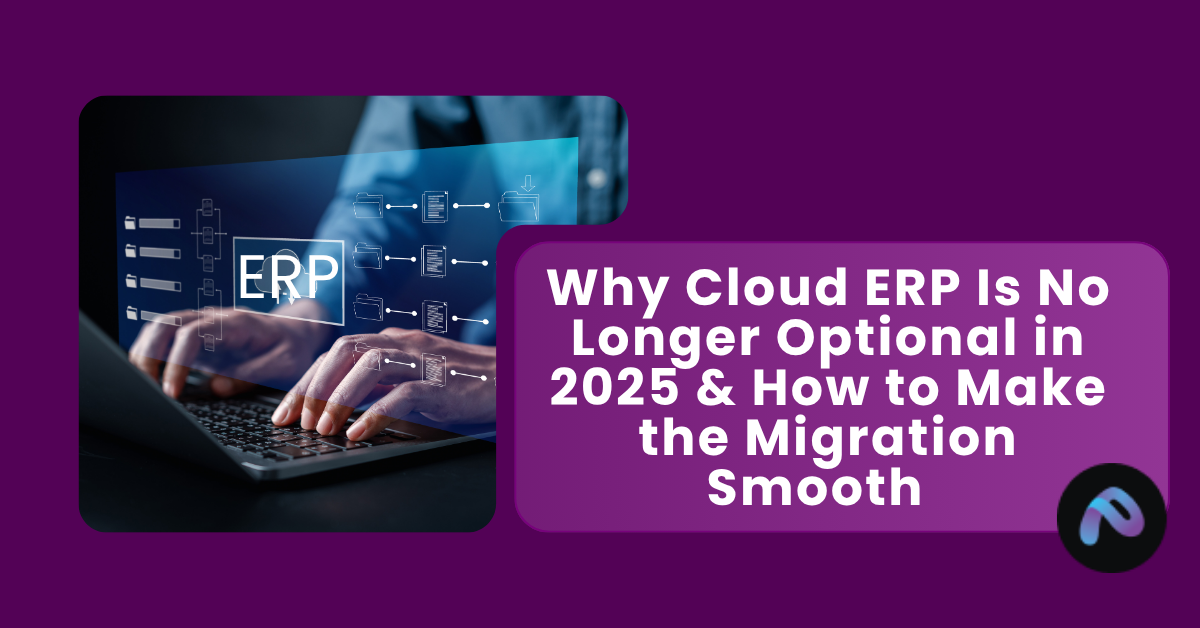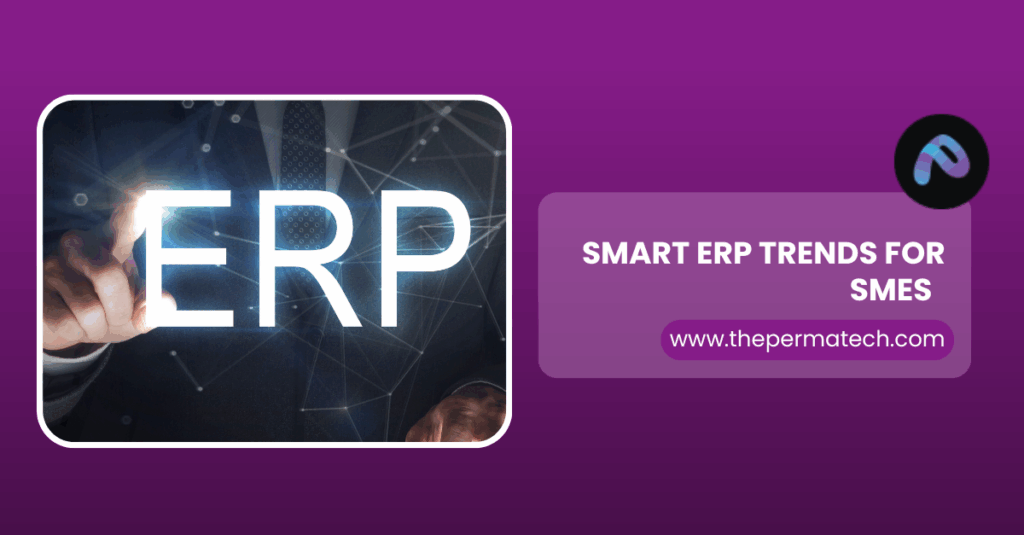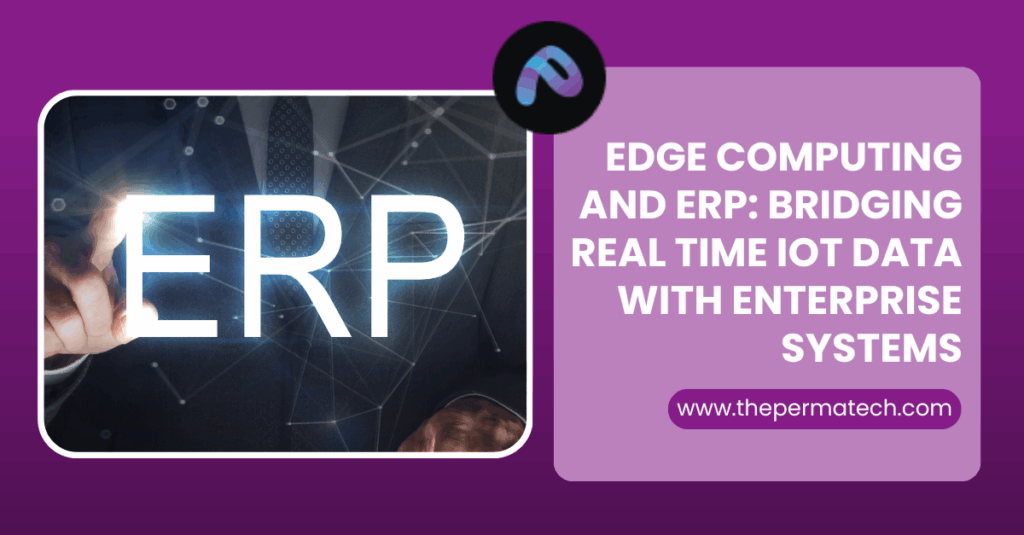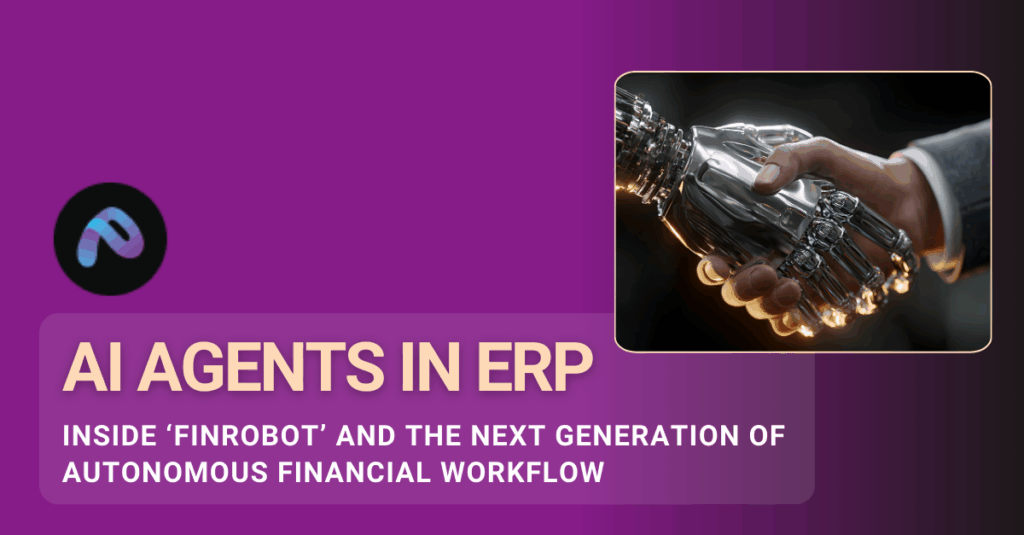In 2025, cloud based Enterprise Resource Planning (ERP) systems are no longer a “future investment”,they are a present day necessity. Businesses that once hesitated to migrate from on premise solutions now face competitive, security, and scalability pressures that make cloud ERP the default choice. According to Gartner’s 2025 IT Spending Outlook, over 85% of enterprises will run at least part of their ERP workloads in the cloud, up from just 30% in 2020.
But while the case for cloud ERP is stronger than ever, the migration journey can be complex. This article explores why cloud ERP has become non negotiable in 2025, the latest market data and adoption trends and practical strategies to ensure a smooth transition.
Why Cloud ERP Is Now Essential
1. Rising Digital First Demands
Customers, suppliers and employees now expect real time data access. On premise ERP often can’t deliver the flexibility needed for omnichannel commerce, hybrid work, and AI driven analytics. Cloud ERP allows instant integration across finance, supply chain, HR and customer experience platforms.
- In 2025, 65% of B2B buyers report preferring suppliers with integrated digital order tracking, powered by ERP cloud integrations.
2. Cybersecurity & Compliance Pressures
With global regulations such as EU’s Digital Operational Resilience Act (DORA) and U.S. Cybersecurity Executive Orders, compliance requirements are evolving faster than legacy ERP can adapt. Cloud providers now offer continuous security patching, zero trust frameworks and compliance as a service, reducing liability.
- IDC reports that 73% of enterprises migrating to cloud ERP cite “improved security posture” as a top driver.
3. Cost and Efficiency Gains
The shift to cloud ERP reduces capital expenditure on hardware and lowers maintenance overhead. More importantly, subscription models (SaaS ERP) make costs predictable and scalable.
A 2024 Deloitte survey found:
- Cloud ERP cuts IT infrastructure costs by 30 – 40%.
- Businesses adopting AI enabled ERP see a 22% faster decision making cycle.
4. AI & Automation Integration
2025 is the year ERP moves beyond reporting into predictive analytics and process automation. Cloud native ERPs now embed AI copilots for financial forecasting, demand planning and workforce optimization.
Example: Oracle Fusion Cloud ERP’s AI powered anomaly detection reduced manual reconciliation efforts by 60% for Fortune 500 adopters.
Cloud ERP Adoption Trends in 2025
| Region | Adoption Rate (2025 est.) | Key Drivers |
| North America | 88% | Compliance, AI integration, hybrid work |
| Europe | 81% | GDPR, DORA, energy sector digitalization |
| Asia-Pacific | 76% | Manufacturing digitization, cloud-first policies |
| Middle East & Africa | 65% | Infrastructure modernization, government cloud push |
| Latin America | 58% | Cost efficiency, mobile-first ERP adoption |
Key Takeaway: While adoption is highest in North America, Asia Pacific is the fastest growing, with governments pushing for digital transformation in manufacturing and public services.
Common Migration Challenges
Despite clear benefits, many companies face hurdles during cloud ERP transitions:
- Data Migration Risks : Inconsistent data formats or historical inaccuracies lead to costly delays.
- Customization Gaps : On prem ERP is often highly customized; replicating workflows in the cloud may require re engineering.
- Change Management Resistance : Employees used to legacy workflows may resist new interfaces.
- Integration Complexity : Connecting ERP with CRM, HR and supply chain tools requires API first design.
- Downtime Concerns : Business continuity during migration remains a key worry.
How to Make the Migration Smooth
1. Conduct a Cloud Readiness Assessment
Evaluate infrastructure, current ERP version and integration dependencies. Map out which processes require reengineering vs. simple migration.
Pro tip: Use a pilot migration for non critical modules (e.g., HR, procurement) before tackling core finance or supply chain.
2. Prioritize Data Governance
ERP migration is only as smooth as the data behind it. Establish:
- Master Data Management (MDM) policies
- Data cleansing before migration
- Ongoing data quality KPIs
3. Select the Right Deployment Model
Not every business needs a full SaaS ERP immediately. Options include:
- SaaS (Public Cloud ERP): Most cost efficient and scalable.
- Private Cloud ERP: For industries with strict compliance needs (e.g., banking, healthcare).
- Hybrid ERP: Gradual transition model, keeping sensitive workloads on premise while moving others to cloud.
4. Focus on Change Management
Train employees early. Use role-based access, sandbox environments, and ERP adoption champions within departments.
- According to PwC’s 2024 ERP Report, companies that invested in user training saw 33% higher ROI in the first year of migration.
5. Leverage AI & Automation During Migration
Cloud ERP vendors now provide AI migration assistants to map workflows, detect anomalies, and predict integration bottlenecks. This reduces errors and speeds up adoption.
Case Example: A Manufacturing Enterprise in 2025
A U.S. based mid market manufacturer migrated from SAP ECC to SAP S/4HANA Cloud in 2024. Challenges included:
- Legacy customizations in production scheduling
- Resistance from plant operators
Approach:
- Adopted hybrid deployment (finance + HR on cloud, production retained on-prem for 12 months).
- Implemented AI powered demand planning in the new ERP.
- Provided role based mobile dashboards for plant supervisors.
Results (2025):
- 27% reduction in inventory carrying costs
- 18% faster order fulfillment cycle
- Improved employee adoption, with 87% daily active usage of ERP mobile apps
The 2025 Cloud ERP Market Outlook
| ERP Vendor | 2025 Market Share | Notable Strength |
| SAP (S/4HANA Cloud) | 34% | Hybrid deployments, manufacturing strength |
| Oracle Fusion Cloud ERP | 28% | AI/ML integration, financial analytics |
| Microsoft Dynamics 365 | 16% | SMB focus, Teams & Power BI integration |
| Infor CloudSuite | 10% | Industry-specific verticals (healthcare, retail) |
| Others | 12% | Niche and regional providers |
Insight: ERP competition in 2025 is driven by AI integration and industry specialization, not just core ERP functions.
Conclusion
Cloud ERP is no longer a luxury,it’s the foundation for business agility in 2025. With the right strategy, organizations can avoid common pitfalls and unlock benefits ranging from cost reduction to AI driven insights.The migration journey is about more than technology; it’s about people, processes, and preparation. Businesses that act decisively in 2025 will not only stay compliant and efficient but also future proof their operations for the next decade.





